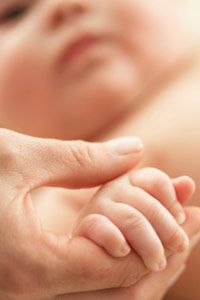If you don't have a lot of experience with babies, you probably expect them to look like they do in television commercials, with perfectly smooth, soft skin. But the reality of baby skin is not always as pretty as a picture. Much to most new parents' surprise, rashes, bumps or discoloration occur quite frequently on newborn skin. Fortunately, most baby skin issues really aren't problems at all but are merely a normal part of infant development. Most of the time, they can be resolved easily or prevented altogether.
Millia, which are blocked oil glands, sometimes appear as little white bumps on a baby's nose or cheeks. These bumps usually disappear within a few weeks of birth. However, pimples -- called baby acne -- may persist for a longer period but will eventually disappear without treatment. Hormones passed along from the mother toward the last part of pregnancy are usually assumed to be the cause of this unsightly but harmless condition [source: Baby Center].
Advertisement
Cradle cap, another common baby skin problem, is a greasy scalp condition that normally resolves itself within the infant's first few months of life. Cradle cap can travel to other parts of the body, appearing as a yellowish, crusty rash on the face, neck or armpits or behind the ears. A gentle shampooing every few days will help to get rid of the problem. Another solution is to gently rub a bit of baby oil onto the affected areas. Use a baby brush to brush it out or wash it off [source: Haas].
"Stork bites" and "angel kisses" are also normal and usually disappear without treatment. These small, red marks at the back of the neck are blood vessels. Mongolian spots are flat, gray-blue spots on babies with darker skin tones. These, too, are normal and usually fade on their own, although it may take several years [source: WebMD: Rashes].
Most baby skin issues are relatively benign and will resolve themselves in time. But, some other, more severe conditions can crop up that require a doctor's care. Read on to learn more about what you can expect from a newborn baby's skin.
Advertisement
